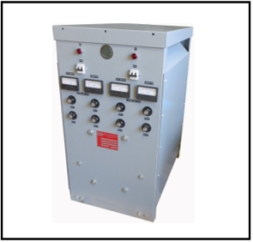A bipolar power supply, also known as a dual power supply or split power supply, is a type of power supply that provides both positive and negative voltage outputs relative to a common ground reference. It is commonly used in electronics and electrical circuits where both positive and negative voltage levels are required to operate various components, such as amplifiers, op-amps, and other analog devices. Here are some key characteristics and applications of bipolar power supplies:
-
Positive and Negative Voltage Outputs: A bipolar power supply typically has two output terminals: one for positive voltage and another for negative voltage. The voltage at these terminals is referenced to a common ground point.
-
Common Ground: The common ground point is usually connected to the circuit’s ground reference. It serves as the reference point for both positive and negative voltages, allowing components to work with voltage levels that are both above and below ground potential.
-
Voltage Regulation: Bipolar power supplies are designed to provide stable and regulated voltage outputs for both positive and negative voltages. Voltage regulation ensures that the output voltages remain relatively constant, even as the load or input voltage varies.
-
Dual Output Adjustable: In many cases, the positive and negative voltage outputs of a bipolar power supply are adjustable. Users can set the desired voltage levels within a specified range using adjustable voltage controls or potentiometers.
-
Applications:
- Operational Amplifiers (Op-Amps): Bipolar power supplies are commonly used in op-amp circuits where both positive and negative supply voltages are needed to enable amplification of both positive and negative input signals.
- Audio Amplifiers: Audio amplifiers often require a bipolar power supply to accommodate AC audio signals that swing both above and below ground.
- Signal Processing Circuits: Many analog signal processing circuits benefit from bipolar supplies to handle both positive and negative signals accurately.
- Electronic Testing Equipment: Bipolar power supplies are used in laboratories and electronic testing equipment to provide variable voltage sources for testing and calibration.
-
Symmetrical Operation: Bipolar power supplies provide symmetrical voltage levels relative to ground, making them suitable for circuits that require balanced positive and negative voltage operation.
-
Current Rating: The current rating of a bipolar power supply determines how much current it can provide to the load. It’s essential to select a power supply with an appropriate current rating to meet the demands of the connected circuit.
-
Safety Considerations: When working with bipolar power supplies, it’s crucial to observe proper safety precautions to prevent short circuits or electrical shocks, especially when adjusting voltage levels.
In summary, a bipolar power supply is a versatile power source that provides both positive and negative voltage outputs relative to a common ground reference. It is widely used in electronics and electrical circuits where symmetrical voltage operation is required, such as in amplifiers and signal processing applications. Proper voltage regulation and safety measures are essential when using bipolar power supplies to ensure the reliable and safe operation of electronic circuits.

